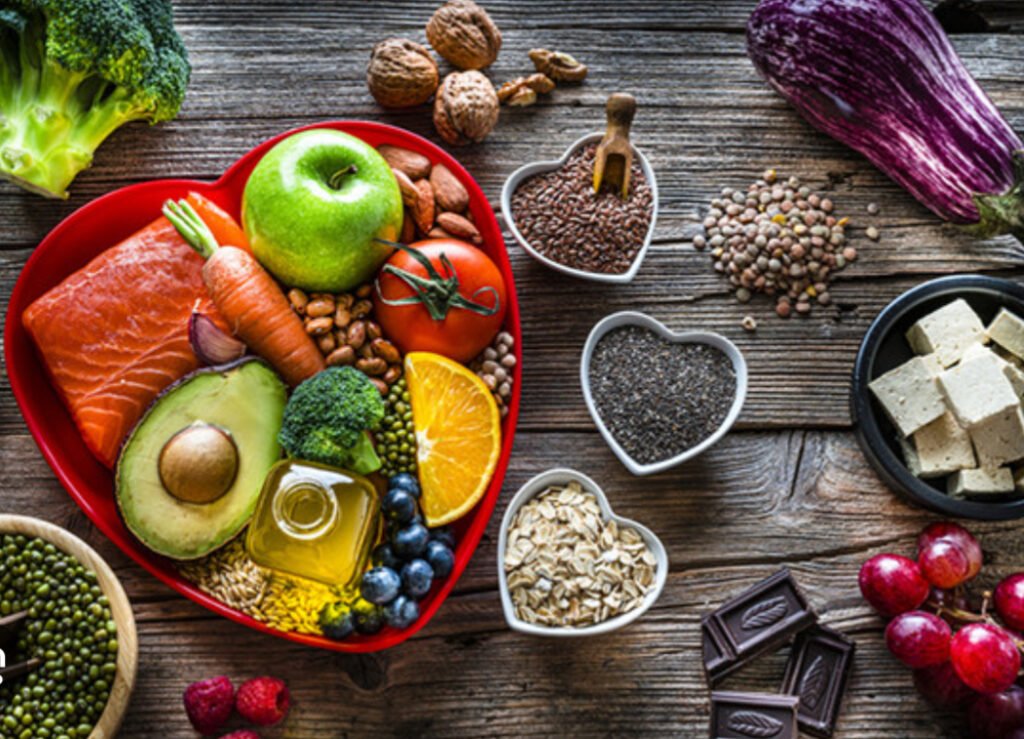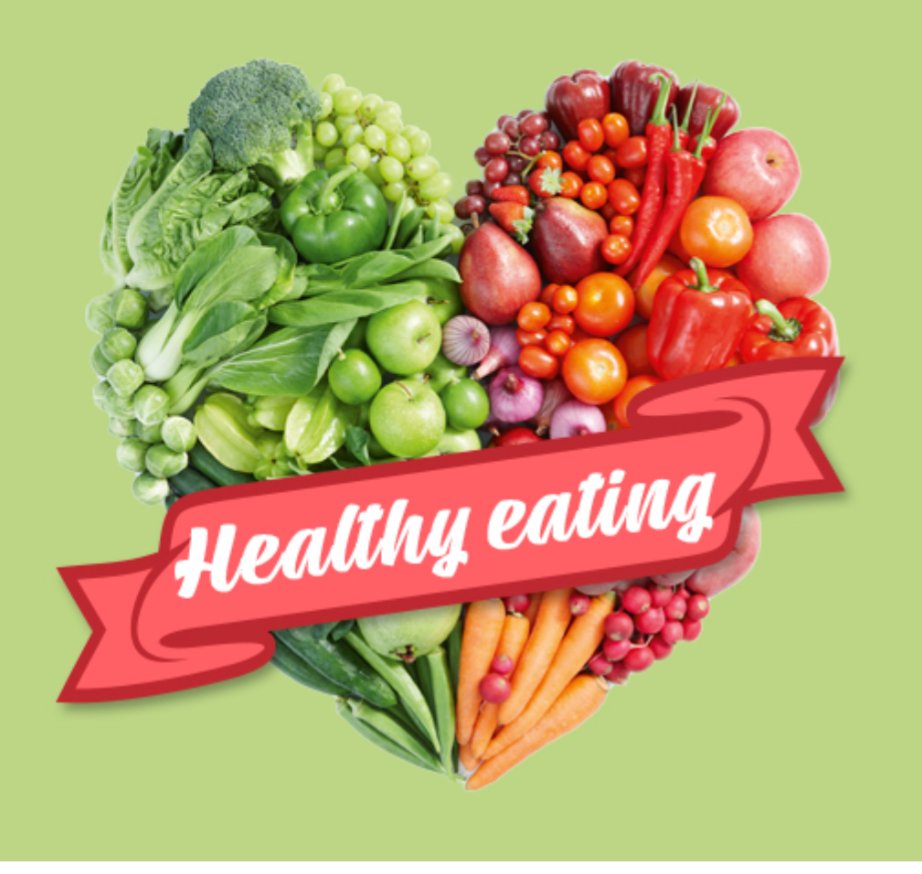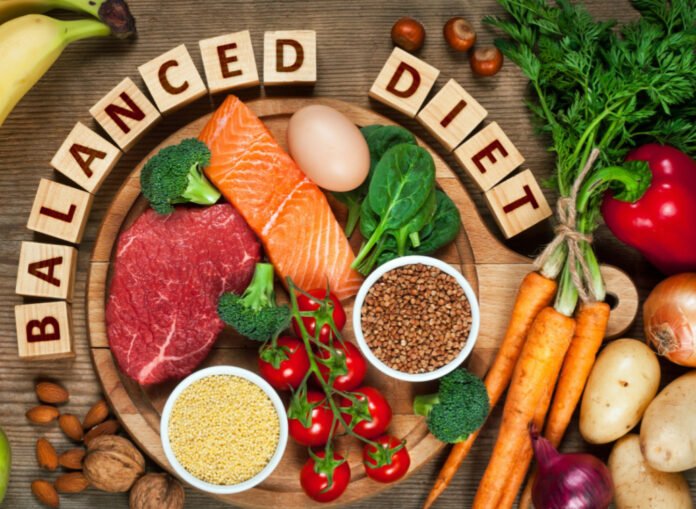What Is Healthy Eating? (And Why It Still Matters in 2025)
Let’s be real: in the world of 2025 — where AI makes your coffee order and your fridge can literally DM you — healthy eating might sound like a boring throwback to the stone age. But it’s actually more important now than ever. Because no matter how smart your tech, your body still needs real food to function, thrive and glow.
Healthy eating isn’t about cutting carbs, counting every calorie, or swearing off sugar forever. It’s about fueling your body with food that supports your energy, mood, focus, and future — without making you miserable.

Here’s the deal:
- Eat real food. (Vegetables = yes. Mystery ingredients = no.)
- Hydrate like it’s your job. (Water > soda every time.)
- Balance your plate instead of punishing yourself.
- Tune into how food makes you feel, not just what it looks like on Instagram.
Forget “perfect.” Your goal is progress. And it starts with understanding what healthy eating really means — in a way that works for your life.
Nutrition Tips That Actually Work in Real Life
Raise your hand if you’ve been overwhelmed by nutrition “rules.” No eating after 7 p.m. Don’t mix fruit with protein. Only drink celery juice on odd-numbered days. Yeah, no thanks.
What you need are nutrition tips that work in real life — when you’re busy, hungry, or just don’t feel like cooking. These are easy habits that don’t require perfection. They’re small changes that add up fast — and feel good doing it.
What you need are nutrition tips that work in real life — when you’re busy, hungry, or just don’t feel like cooking. These are easy habits that don’t require perfection. They’re small changes that add up fast — and feel good doing it.
Here are 20 of our favorite real-life nutrition tips:
- Start with a glass of water every morning — before coffee.
- Eat protein + fiber at every meal (keeps you full and focused).
- Add a vegetable to anything — eggs, pasta, sandwiches, pizza, you name it.
- Don’t fear healthy fats. Avocados and olive oil are your friends.
- Read ingredient labels. If it looks like science fiction, maybe skip it.
- Batch cook a few meals on Sundays — Future You will be grateful.
- Use smaller plates and bowls — it naturally helps with portion control.
- Don’t skip meals. “Hangry” is not a productive state of mind.
- Prep snacks ahead of time — almonds, cut fruit, Greek yogurt.
- Shop the outer edges of the grocery store (that’s where the fresh stuff lives).
- Make water more exciting with lemon, mint, or cucumber.
- Keep healthy foods in sight — put that fruit bowl front and center.
- Don’t drink your calories — soda and sugary drinks sneak in fast.
- Try one new veggie each week — explore, experiment, have fun.
- Make 80% of your meals healthy and enjoy the other 20% guilt-free.
- Track your energy and mood — food affects both.
- Learn to cook three go-to meals that you actually like.
- Skip the “diet” foods — real, whole food is more satisfying.
- Eat slow. Your stomach and brain need time to sync.
- Give yourself grace — it’s not about being perfect, it’s about being better.

A Balanced Diet: What It Looks Like and Why It Works
Let’s talk about balance — not the yoga-on-a-cliff kind, but the “what’s on your plate” kind. Because healthy eating isn’t about deprivation or boring salads. It’s about giving your body the right mix of carbs, protein, fats, fiber, and flavor — consistently and intentionally.
A balanced plate supports your energy, keeps your blood sugar steady, and helps you avoid the crash-and-crave cycle. Whether you’re meal-prepping or grabbing something on the go, nutrition tips like including lean protein, whole grains, and colorful veggies can transform how you feel.
The beauty of healthy eating is that it’s flexible, flavorful, and totally doable — no matter your age, lifestyle, or budget. And when you focus on the basics of a balanced diet, you’re not just feeding your body — you’re building a long-term routine that actually sticks.
Imagine your plate as a pie chart:
- 🥦 Half is fruits and vegetables (color = nutrients!)
- 🍗 One quarter is lean protein (chicken, tofu, beans, eggs)
- 🍚 One quarter is whole grains (quinoa, brown rice, oats)
- 🥑 Add healthy fats (avocado, nuts, olive oil)
- 💧 And always sip water or herbal tea with meals
Balanced meals help:
- Keep your blood sugar stable
- Improve digestion
- Reduce cravings
- Give you long-lasting energy
- Support brain health and focus
It’s not about being strict. It’s about being smart — and satisfied.
Detox Juice for Weight Loss: What Works and What Doesn’t
Let’s cut through the smoothie-shop marketing hype: you don’t need to “detox” your body with a 3-day juice cleanse.Your liver and kidneys already do a pretty amazing job at detoxing on their own.
That said, a well-made juice can be a great health boost — if it’s part of a balanced approach. So here’s what’s fact vs. fiction:
What doesn’t work:
- Replacing all meals with juice for days
- Laxative detox teas (nope)
- Juices loaded with fruit and sugar, no fiber
What works:
- Using fresh juice to supplement real meals
- Including veggies like spinach, kale, or celery
- Adding ginger, turmeric, or lemon for antioxidants
- Drinking it with a balanced breakfast, not instead of food
Try these 3 juice combos:
- Green Machine: Cucumber, kale, apple, lemon, mint
- Glow Getter: Carrot, ginger, orange, turmeric
- Hydration Hero: Watermelon, lime, mint, coconut water
The goal? Refresh, nourish, and hydrate — not starve.
How to Create a Fitness Routine That Actually Works
News flash: your workout doesn’t have to feel like punishment. In fact, if you hate it, you won’t stick to it. So ditch the pressure to become a gym rat and focus on movement that makes you feel alive.
Step 1: Set a goal that’s not about weight.
Try:
- “I want more energy.”
- “I want to sleep better.”
- “I want to feel stronger.”
Step 2: Pick your vibe.
- Dancing in your kitchen? ✅
- Walks while catching up on podcasts? ✅
- YouTube yoga in your PJs? Absolutely.
Step 3: Make it stick.
- Schedule your workouts like appointments
- Keep a journal of how you feel after (spoiler: usually better)
- Eat a pre-workout snack (banana + nut butter = gold)
- Refuel after with protein (hello smoothie!)
Consistency beats intensity. Always.
Intermittent Fasting and Diabetes: What You Should Know
Intermittent fasting (IF) isn’t a magic bullet, but it’s not a scam either. It’s just a timing strategy — and for some people, especially those with prediabetes, it can be helpful. But for others, especially folks managing type 1 or insulin-dependent diabetes, it might be risky.
So what is it?
Most popular version = 16:8 (fast for 16 hours, eat during 8 hours). Simple, right?
Potential benefits:
- May reduce insulin resistance
- Can lower inflammation
- Might aid weight loss without cutting calories
But there are catches:
- It’s not for everyone
- It can cause low blood sugar if not done carefully
- You still have to eat real, nutritious food
If you’re curious, talk to your doctor first. And always listen to your body more than your timer.
7-Day Healthy Eating Challenge: Reset Your Body & Mind
Sometimes you don’t need a year-long overhaul — you just need a 7-day reset to get back on track. This challenge is simple, satisfying, and full of foods that love you back.
Here’s how it works:
- Drink 8 glasses of water daily
- Eat 3 balanced meals each day
- Cut processed sugar, soda, and white bread
- No eating after 8 p.m.
- Journal how you feel each day
Sample Day:
- 🥣 Breakfast: Greek yogurt + chia + strawberries
- 🥗 Lunch: Grilled salmon, quinoa, roasted veggies
- 🍲 Dinner: Lentil stew + spinach salad + whole grain toast
- 🍎 Snack: Apple slices with almond butter
- ✍️ Reflection: “Which meal made me feel the best today?”
Repeat as needed. You’ll be shocked at how good you feel after one week.
Natural Remedies for Diabetes: What’s Backed by Science
We’re wrapping things up with a hot topic: natural remedies for blood sugar control. And no, we’re not talking about magic teas or shady Instagram pills. We’re talking about real, proven food-based solutions.
Backed by science:
- Cinnamon – May help lower fasting glucose
- Apple cider vinegar – Can blunt post-meal spikes
- Berberine – Natural compound that mimics metformin
- Fenugreek – Shown to support insulin sensitivity
- Fiber – Slows down sugar absorption (think beans, oats, flaxseed)
NOT backed by science:
- “Diabetes detox” kits
- Miracle cure supplements
- Anything promising to “reverse diabetes in 7 days”
Use food as medicine — but always talk to your doctor before mixing natural remedies with prescribed meds.
✅ Final Thoughts: You’ve Got This
Let’s be honest — the world of nutrition can feel like a total circus. One day carbs are evil, the next they’re essential. Juice cleanses promise miracles. TikTok influencers shout about keto while your friend swears by going plant-based. It’s enough to make anyone throw in the towel and order fries.
But here’s the truth: a healthy eating doesn’t have to be complicated, boring, or overwhelming. It just has to be intentional. And most importantly, it has to fit into your real life — not someone else’s idea of perfection.
But here’s the truth: It doesn’t have to be complicated, boring, or overwhelming. It just has to be intentional. And most importantly, it has to fit into your real life — not someone else’s idea of perfection.
At its core, healthy eating is about feeling good. It’s about waking up with energy, staying sharp throughout the day, and going to bed without regrets. It’s about having the stamina to chase your dreams (or your kids), and the confidence to know you’re taking care of your body the best you can.
If you’ve made it this far into the guide, give yourself some credit — you’re already moving in the right direction. Wether you are a total beginner or just looking to reset your routine, remeber: health-eating is a journey about progress, not perfection. You don’t need to count every calorie or swear off bread forever. You simply need to keep showing up, one small, smart choice at a time.
- Start simple. Add a veggie to one meal. Drink water first thing in the morning. Cook at home once more per week. These tiny shifts build momentum.
- Build your own balanced diet. What works for your friend might not work for you — and that’s okay. Use the balanced plate model (veggies, protein, grains, healthy fats), and adjust it to your taste and culture. Food should be joyful, not clinical.
- Ignore perfection. Life happens. You’ll eat late sometimes. You’ll crave dessert. You’ll skip workouts. That’s human. What matters is what you do next — not what you missed.
- Stick to timeless nutrition tips. Drink water, eat whole foods, limit processed stuff, and stay mindful of how food makes you feel. These nutrition tips aren’t trendy — they’re rooted in decades of real results.
- Make it personal. Healthy eating should never feel like punishment. If you love smoothies, build a routine around that. If you hate salad but love roasted veggies, go for it.
- Let your habits evolve. As you grow, your lifestyle will shift. What worked in your 20s might not in your 40s — and that’s fine. Check in with yourself often.
✅ Call to Action: Ready to Start Your Healthy Eating Journey?
Don’t just read about healthy habits — live them.
📌 Bookmark this guide so you can come back anytime you need a boost.
👯 Share it with a friend who’s ready to feel better, eat smarter, and live stronger.
📬 Join our free newsletter to get weekly nutrition tips, easy meal plans, and real-life wellness hacks — all designed for beginners like you.
🎯 Start your reset today — one meal, one habit, one win at a time.
👉 Subscribe Now & Get Our 7-Day Healthy Eating Challenge PDF for Free!
Because your health deserves more than a quick fix — it deserves a fresh start.





